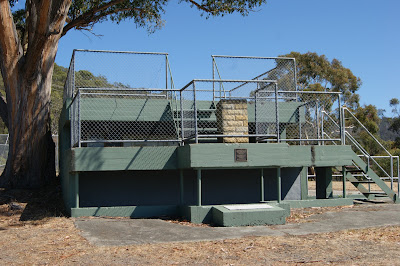With the outbreak of World War II, the Department of Defence acquired land near South Arm close to the mouth of the Derwent River port of Hobart
Major Mark Pritchard was the first commanding officer of the new defences that became known as Fort Direction
Throughout the war, there was a 24-hour watch every single day, and the site was usually manned by at least 15 Royal Australian Navy personnel. A record of every ship entering the Derwent River Derwent River
On the opposite western shore of the
Although the site is not from the colonial period, it forms another unique piece of the history of the Hobart Coastal Defence system that began in the earliest years of the new settlement and includes Kangaroo Point and Alexandra Batteries.








